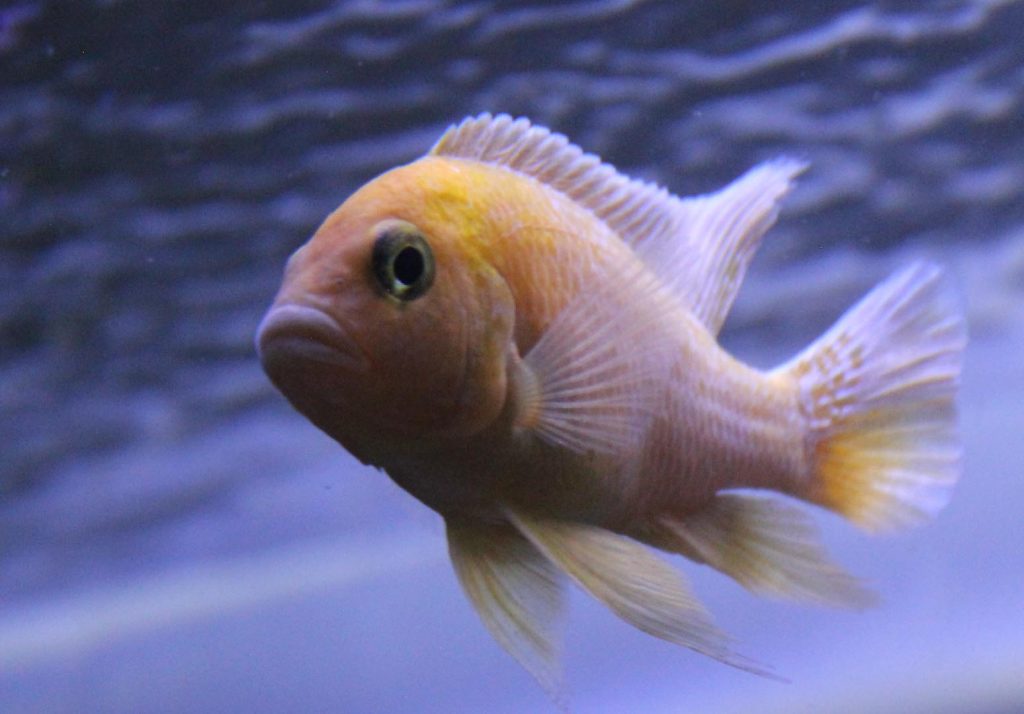 Scientific Name Metriaclima Estherae
Scientific Name Metriaclima Estherae
Family Cichlidae
pH 7.5 – 8.5
dH 10 – 17
Temp 23– 27 degrees
Life Span 10 years
Origin
The Red Zebra Originates from Lake Malawi in Africa.
Description
The Red Zebra is a Mbuna cichlid and is also know by many other names including Orange Zebra, Cherry Red Zebra, Orange Blue Mouth Breeder, Tilapia Zebra. Males growing up to 5 inches, are often bright blue sometimes with light to dark barring and 4 – 7 egg spots on the anal fin. They also can be orange red in colour. Females colours range from a light yellow orange to a bright orange red with 0 – 3 egg spots on the anal fin. Females grow slightly smaller than the males up to 4 inches.
Environment
The Red Zebra are sensitive so keeping water quality high is essential to maintaining good health. Doing water changes of around 30% each week will maintain this if bio-load is struggling. Provide plenty of rocks and caves for this fish to hide and play in. This also give the weaker more submissive the ability to hide and take refuge if fighting occurs. Plants like Anubias, Java Fern, Val work well and also plastic plants. Gravel or sand can be used but make sure to have a minimum of at least 5cm of substrate. The more the better as they like to dig up their environment. Secure rocks and ornaments down by making sure they are pushed firmly in the substrate. Gluing is an option. Minimum tank size 150L.
Behaviour
Being more laid back than other Mbuna’s, the Red Zebra is still aggressive towards its own type and also toward other species. Give plenty of room to reduce aggression against other tank mates. The Red Zebra is best kept with a ratio of 2-3 females per male. This will reduce aggression and also help with breeding. They will frequent all areas of the aquarium. Suggested tank mates are other Mbuna or Malawi cichlids.
Food
Red Zebra’s are omnivores, feeding on insects, invertebrates, Spirulina and algae flakes, frozen foods, cichlid flake & pellet food. Eating more vegetable based foods like lettuce, zucchini, peas and spinach will help keep Malawi Bloat from occurring.
Disease
Malawi bloat is common for the Red Zebra due to an excess of fat and protein. Feeding more vegetable based foods will eliminate this problem. They are also susceptible to a range of other diseases that are common in the aquarium.
Breeding
Being a mouth brooder it is relatively easy to breed in the aquarium. Males are able to mate with multiple female partners and for best success keep up to 6 females per male. The female will lay about 40 – 60 eggs and then scoop them up into her mouth. The male will then fertilize these eggs. The fry will remain in the mouth of the female for up to 21 days before being releasing. The female will protect her young until they are large enough to fend for themselves. Feed baby brine shrimp or powdered dry foods.
